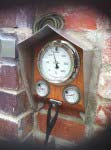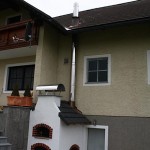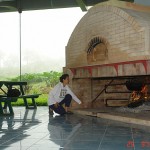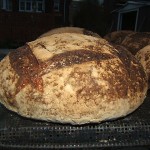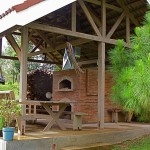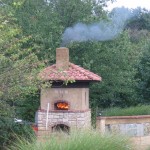Cold sore - fever blisters - Herpes virus
Complete information with DIY treatment from A to Z
Cold sore virus prevention. Information on herpes plus effective treatment from A to Z. DIY prevent cold sores medicine; tutorial for making own home made cold-sores remedy - formula included.
Whether you are first time cold sore sufferer or suffer recurrences regularly for a short or long time, if you are using common cold sore treatments sold by pharmacies without satisfying results, don't get frustrated.
This virus can be stopped quite easily, by coming to terms with what can be done and by making inexpensive and effective cold sore treatment at home.
Many long-time cold sore sufferers I know, (including myself) experiencing severe cases, treat themselves. Making a treatment is very simple; however it works powerfully, and can bring noticeable benefit right from a first application. Anyone can start making and using the treatment at any stage. The remedy can be applied in the first tingling stage of cold sore outbreak as well as on an already developed blister with immediate relieve.
I refer to cold sores but the treatment suits all three herpes types; herpes simplex (lip and facial cold sores), genital herpes, herpes zoster (shingles).
The information material is written in five main parts:
- What is cold sore?
- Nutrition
- How to make your own cold sore remedy
- Growing your own plant as the main ingredient (includes pictures)
- The immune system - fixing and support
Please let your friends and family know about these pages in the faster rate than the herpes virus spreads among human population. Here is this very effective relief to prevent cold sores all together, the knowledge just needs to be absorbed!
What is cold sore?
A cold sore also known as fever blisters and herpes is a recurrent viral infection, caused by the herpes simplex virus. I am sure since you showed interest in reading this educational material you know that a cold sore is characterized by the appearance of single or multiple clusters of small blisters on a reddened base, commonly occurring around the mouth area.
If you are a cold sore sufferer it could be very likely that you picked up the virus when you were a child. The first infection may have occurred in childhood and most of the time this infection is symptom less or associated with fever, sore throat or even mistaken for teething. If the infection occurs in older children symptoms may be more severe and include high fever, muscle ache and mouth ulcers. The time of the first infection is not exclusive only to children; it may very well happen to you when you reach your adulthood.
Okay you may ask, but what is happening in our body after the initial infection? Well, the virus lies, or should I say hides dormant inside the nerve cells and becomes active after we expose ourselves to certain triggers. (I'll explain these later in the text). When it becomes active it travels down the nerve cell to the face turning into a cold sore. The symptoms that are present while we suffer cold sore outbreak include itching, tingling discomfort, painful visible blisters and crust.
There can be many damaging triggers that may activate the cold sore; most often colds, infections, stress, not enough good quality sleep (repeated lack of sleep or insomnia), run down immune system, diet rich in L-arginine opposite to L-lysine, excessive exposure to the sunshine and/or wind, and if you are a woman also your period may trigger the cold sore. As you can see there can be many different factors to consider and think about when you are suffering cold sores regularly.
Once the burning blister(s) develop and before it becomes crusty, many people have tendency to prick them (I should know as I was one who used to do this). The reason for this pricking is to open the blister to release the pressure from inside and hopefully dry up and form a crust thus speeds up the healing process. Yes it works, however if we are talking about the blister being developed it also has to be mentioned that by doing this we are getting rid of the fluid which forms the protective barrier that discourages infection setting in. The fluid inside the blister is of course highly contagious; not using clean tissue and hand hygiene prior to and after touching the cold sore can cause spreading the cold sore thus you may end up with the whole lip and other parts of your face covered with extra unwanted coldsore blisters.
Most colds sores follow a predictable pattern covering four stages. If it is left untreated right from the start when the first signs are noticed, the whole process of average cold sore outbreak lasts for 10-12 days and I am sure you will agree with me when I say that it is a very long time to give up on your normal everyday life. Even when you treat it with common cold sore treatments and don't watch the other triggers during this time, such as your diet, stress levels, lack of sleep, exposure to sun, the virus will push through again and the outbreak and healing process becomes longer.
The four stages of a cold sore
First Stage
The first stage represents signs of a burning, tingling or itching sensation, which is happening before we actually see the cold sore growing. This sensation will be present around your mouth, nose but often on other parts of your face. This stage is called prodromal stage and can lasts around 12-24 hours.
Applying of the below mentioned treatment in first stage shows effective improvement after the first application. Reapply every 30 minutes and if the individual's immune system is not run down too much two to five applications will stop the new outbreak progress. The treatment is clear and can be worn during the day. It is always good advice to take it easy if you're running yourself down both physically and mentally. I know it might not always be simple or easy to do, but it pays. Starting the treatment early will prevent the cold sore from appearing and will destroy the virus affecting nerves. Remember to not only apply topical applications but also adjust your diet (see nutrition section) and avoid all triggers known to you. It is worth mentioning that at this stage the situation depends on the individual as many people experience great stress just from the taught they may have a cold sore again, while other people simply choose to ignore these initial signs. Anyway, attending to the very first signs as soon as possible prevents a lot of horrible frustration for those who prefer not to have a cold sore.
Second Stage
Second stage is usually characterized by the formation of clusters of blisters appearing on a swollen red base and it is the most unpleasant stage which can become very ugly and embarrassing. At this time I choose to hide from the outside world whenever/wherever possible and refuse socializing or even meeting with my friends. When this happens the area becomes very irritating and painful, a blister forms within 24 hours and if the blister wasn't pricked the whole stage lasts up to three days.
If you start to use the treatment at the early part of this second stage when the blister is starting to grow(that is when the prodromal stage was missed) the blister will develop much smaller to almost no blister at all. It will most probably be only a small swollen red spot on the lip, and no crust will form.
Third Stage
In a normal full cold sore development, when the weeping blister breaks down, it is the sign that we are entering the third stage of cold sore infection. When the cold sore opens keep it clean as with any other wound protecting it from bacteria, till the hard crust layer develops. This stage lasts 3-4 days.
If you made yourself your own remedy late when already in this third stage then the treatment applications will again speed up the healing process and the scab will form much faster.
Fourth Stage
Once the crusty scab is formed we are in stage four. Blisters start to dry and eventually scabs fall off and the cold sores heal. This time we are looking at another period of 3-4 days, however if the cold sore was outside the lip area, for example above the lip, the crust will stay on longer usually up to 7 days. As the scab drops off from this area above the lip the new skin stays reddish in color and thin for another 10-14 days or even longer.
Without the treatment applications the scab is bulky, hard and dry, you can't open your mouth to eat or to laugh as it tends to crack and bleed, prolonging the healing process. With every crack you are opening the wound and making new mini wound within it. This treatment application allows you to be able to laugh and stretch your lips without danger of cracking the scab.
How to stop the virus from spreading
Preventing coldsore
If you belong to this "can't stop cold sores" category; then stay with me here. Read all instructions (mainly in section 5) and you will know how to stop them repeating.
From my own experience I know that many people do not realize how easy the cold sore virus can be spread. Are cold sores contagious? YES, YES, YES it is very, very contagious and it stays contagious right from the time before the actual blister appears till it is completely dry. It can take up to ten days during which the virus can be spread onto another person.
I still remember how awful I felt when I had outbreaks being aware I could cause someone else to suffer. The herpes virus will attach to glass, or cutlery while eating and drinking, to a towel, toothbrush or can be carried on hands.
So how can we stop the virus from spreading?
Do not share toothbrushes, towels, cups or cutlery. Once a blister has appeared, it is important to use a new toothbrush.
Do not kiss! If you are an adult with cold sore, try to go by rule "cuddle but don't kiss" as this way you spare your children from having the virus.
Do not pick or play with the blister or scab, and always wash your hands after applying the treatment or use cotton buds.
Do not touch your eyes as a cold sore can very easily spread to your eyes where it is extremely painful and unpleasant.
Do not practice oral s+ e+ x+ if you have an active cold sore as it will cause genital herpes.
Note: Take extra care around newborn babies as this virus can make them very sick.
Cold sore triggers
As you can see it is not very difficult to make sure the virus is not spread around, but when I was suffering all I wanted to do was to prevent it from happening altogether. Is there anything to stop attacks and reduce the frequency? By now we know that the virus is stuck in the body for good, the good thing is that by now we also know what can trigger the virus to become active, therefore we can work on reducing our exposure to known triggers.
What to do?
Avoid exposure to the sunlight especially between 11.00am and 3.00pm, if you happen to be in the sun, wear hat and use sunscreen on your face and lips as well.
Reduce the stress in your life, I know it is easy to say, but hey not so unachievable.
Boost up your immune system (I will talk more about different ways of doing this later on page 8.) Get plenty of good quality sleep every day. Do everything possible to create a good sleeping environment for yourself, your child or anyone who fights the herpes virus. Sleep is very important! In case or if needed go through the page with facts about insomnia and treatment.
Eat the balanced diet including a variety of fresh foods, fish and mung beans and avoid eating nuts, seeds and chocolate. You will read in nutrition section why eating certain foods and avoid certain foods is very important.
Both of these two herbs are the herpes-fighters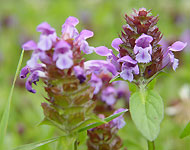 Prunella vulgaris - Self heal 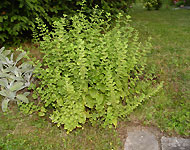 Melissa officinalis - Lemon balm |
Nutrition and treatment
A few very important points for -you can not ignore nor be without
Let's look first at the diet and why it is a very important part of controlling the cold sore virus as well as reducing the frequency.
Researches have found that the ratio of the amino acids 'L-arginine' (sometimes called only arginine or pronounced also as arganine) and L-lysine plays very important part in controlling (not curing!) cold sores. A diet low in arginine and high in L-lysine has become a very popular addition to the treatment of the herpes virus. A list of foods rich in lysine and low in arginine is outlined in the tables in this informational material for your convenience.
This particular dietary approach arose from research showing that lysine has antiviral activity due to blocking amino acid arginine. It was proven that HSV (herpes simplex) replication requires the manufacture of protein very rich in arginine, and also the studies suggested that arginine itself is a stimulator of HSV replication. According to the studies the successful replication of HSV depends on high levels of arginine and low levels of lysine. In the most recent studies the lysine was given to a group of people in high doses (1 gram three times a day), together with dietary restriction of nuts and chocolate, the studies showed significant reduction in recurrence in 74% of people participating in this trial.
L-lysine
L-lysine is an essential amino acid, which mean that it is essential to our health but cannot be manufactured by our body. It must be obtained from our diet. More information about L-lysine.
The ideal diet during the cold sore outbreak should consist of a high consumption of yogurt, fresh fish such as shark (flake fillets), chicken, beef, goat's and cow's milk, tofu, soy milk, eggs, cheese in moderation, cottage cheese, beans, fruits and veggies such as figs, dates, peaches, tomatoes and asparagus.
L-arginine
L-arginine is non-essential amino acid, which means our body is able to manufacture it in our liver from other amino acids. Deficiencies of a nonessential amino acid will not occur if a well-balanced diet is consume because the intake of proper foods will allow the body to produce exactly the amount of amino acid required to function optimally.
Arginine foods should be avoided to prevent an attack and eliminated from diet completely and promptly during the outbreak. These include chocolate, cocoa, and especially all types of nuts, hazel nuts, Brazil nuts, peanuts, almonds, pecans, walnuts, macadamia. Brown and white rice, corn, coconut, some gelatin jelly, rye, barley, wholewheat's should also be avoided.
New SEARCH the Nutritional Foods Database with using the option to show foods pinpointing highest-or-lowest L - Lysine - Lys or K α-amino acid contents in foods, or the L - Arginine, Arg or R α-amino acid amounts (select from a food category for narrowing the foods search further, then choose the listing in Descending or Ascending order and pick the desired nutritional element from the drop-down list of nutrients and continue to proceed with "Search nutrient content".) Plus find all other nutrients' data of all foods individually, if needed, for starting you up comfortably by precisely analysing which foods suit a specific diet much better for you.
Table of foods rich in L - Lysine vs. L - Arginine.
Now, the aim of treatment of cold sores is to shorten the current attack and most importantly to prevent recurrences. By now we have already learned few tricks and simple rules to follow, but what was the great discovery on my journey to cold sore free life? As I mention in the introduction of this article, it was a simple herb from my grandmother's garden, the herb she used whole her life as a beautiful tasty tea before she went to bed. What exactly is this magic herb and where does it come from?
Lemon balm - Melissa officinalis
Melissa officinalis herb, or better known as Lemon Balm probably originates from Asia, but has grown around Mediterranean for several thousand years. This herb has been cultivated over 2000 years. Originally it was grown as a bee plant, which probably gave it its name Melissa, which is Greek word for "honey bee". Its medicinal properties were promoted by Arab physicians in the 10th and 11th centuries. They regarded Lemon Balm as elixir of life for body and soul, driving out depression and reinvigorating the body. It has strong lemon-scented volatile oils, which have anti-viral activity.

Melissa officinalis medicinal herb
You may ask why this herb would do more for me then any other anti-viral cream I can buy in the supermarket or pharmacy. Rather then any single antiviral chemical, Lemon Balm contains several components that work together to prevent the virus from infecting the human cells. The herb contains polyphenols, which combat the herpes simplex virus by relieving the cold sore symptoms,shortening their duration and reducing the chances of further outbreaks.
Trials were conducted in Germany, where Lemon Balm cream was used on the patients at the time of the initial herpes infection. The studies were done in three different hospitals and demonstrated that not a single recurrence occurred, in other words, by using this cream not a single person with a first herpes outbreak developed another cold sore. These particular trials also showed that Lemon Balm also rapidly interrupted the infection and promoted healing of the blisters much more quickly then normal. The Lemon Balm helped the cold sore heal completely within 5 days and as you know it normally takes about 10-14 days for a cold sore to heal entirely. Now when they studied Lemon Balm actions in people with recurrent cold sores, the researches found out that if the suffering person used Lemon Balm cream regularly, they would either stop having recurrences or there was huge reduction in the frequency of the recurrences (on average a cold sore free period longer then 3.5 months). At this point I decided to try to make myself a treatment that could help me to get rid of unwanted and unpleasant cold sores which were controlling my life when an outbreak occurred. After all what could I lose after trying all possible and available cold sore treatments over many years? Before I tell you how to make your own treatment from Lemon Balm, let me tell you more about this great herb.

leafs of Melissa officinalis
Besides being a herb with great anti-viral properties, its key actions are as a relaxant, antispasmodic and nerve tonic. As I mentioned before this herb is known for many centuries, and before we learned about its wonderful anti-viral properties Greek and Arab physicians were using it for its calming effect on nervous system. The relaxing properties of the herb have been at the forefront of uses in folk medicine for years. Tea made with the leaves of this herb is a well proven nightcap especially for people who suffer nervous tension and heart spasms. Centuries ago it was called "elixir of life" and "sovereign for brain, strengthening the memory, and powerfully chasing away melancholy." It is also scientifically proven that it is very helpful in controlling an over active thyroid. It doesn't end here; Lemon Balm can also be useful for digestive problems caused by over-anxiety, indigestion, acidity, nausea, and bloating as well as colicky pain. As you can see you can basically use this herb on a daily bases.
Prunella vulgaris - Self heal
Recent medical research shown that there is another well known herb that can be used effectively to fight the herpes virus. This herb is called Prunella vulgaris, commonly known as Self-heal, or lately called the "Herbal Herpes Cure." It contains the compound called Lignin-Carbohydrate which has ability to act on herpes virus by inhibiting viral binding and penetration into host cell. You can see the recent studies performed on how this herb can be effective in fighting herpes virus on Pubmed.org. (vulgaris = common)
Prunella vulgaris herb has been used as and alternative medicine for centuries. The whole plant can be use as medicinal; it has many useful constituents which posse's antiseptic, antispasmodic, antibacterial, carminative, antipyretic, diuretic, hypotensive, styptic and vermifuge properties. It is great to use for internal and external wounds, if applied in a cream or oil form onto the cold sore it lessens the number of outbreaks and lesions. One of the main constituents in Lemon Balm and Prunella is Rosmarinic Acid, which has strong anti-viral activities. You can prepare your own treatment the same way as you prepare Lemon Balm ointment or tincture, just replace the Lemon Balm herb with Prunella vulgaris (Self-heal), or if you like you may also combine both herbs together 50:50

Prunella vulgaris close up
Self-Heal is native to Europe; it is rather an invasive as a garden plant but is well worth it as it has a long history of use in herbal medicine. If you are interested in planting and harvesting Self-Heal yourself the best time to do this is in autumn or spring by seed sown or by division only in spring. Prunella likes moist, well drained soil in sun or light shade. Plants are cut in summer when they are flowering. They can be used fresh or dried in infusions, tinctures and ointments.

growing Prunella herbs
Prunella vulgaris medicinal herb is edible and can be used as an alternative medicine for number of different health complaint. For many years it has been effectively used to prepare a styptic for wounds and can be also made into gargles or mouthwashes for mouth ulcers and throats. For making these we can use whole flowering plant, fresh or dried in the shade. It can be also used in salad, soups or boiled as pot herb; it is very tasty and refreshing beverage and as a weak infusion it can be used as an eye wash for sties and pinkeye.

flowers of Prunella vulgaris
Making herpes sores, genital herpes sores or cold sores go away for good ...
Do it yourself effective cold sore treatment
If you are keen gardener you know the feeling of the unique pleasure of growing your own herbs. You can easily plant your own Lemon Balm, maybe it is already part of your garden, so all you need to do is just harvest it and make your own remedy. However not all of us are keen gardeners and may not have the time to grow own herbs. Don't worry there are plenty of stores with good quality dried or fresh herbs available and the satisfaction of producing your own herbal remedy is still possible.
What you need before you start?
To ensure quality of the herb only buy from established herbal suppliers. How do you know that the herbs are good quality? Dried herbs should not be stored in the clear glass jars or in sunlight. The color of the herb should be bright and aromatic herbs should have a distinct taste and smell. If the herbs look dull in color they are probably old and have lost their medicinal properties.
When preparing your own remedies try to avoid using aluminum utensils as aluminum is easily absorbed by herbs, instead try to use steel or wooden spatulas or knives and plastic or nylon sieves. Ideally all utensils should be sterilized in sterilizing solution - you can use a sterilizer used for sterilizing baby bottles.
If you suffer an outbreak and don't have treatment on hand, the fastest way to prepare it is to make hot infused oil. When you infuse a herb in oil it allows its active fat soluble ingredients to be extracted. Hot infused oils can last up to 12 months; however they are most potent when used fresh or within 4 months after making.
How to make hot infused Lemon Balm oil
What do you need?
- 2.5g dried (about one tea bag size amount) or 5g of fresh herbs
- 7.5ml olive or sunflower oil
- Glass bowl
- Pan of boiling water
- Cheese cloth
- Glass jug
- Dark glass bottles and labels for storing
Instructions
This is a really easy way of making the remedy for your cold sore. All you need to do is stir dry or fresh chopped herbs in olive or sunflower oil in a glass bowl, which you place over the pan with boiling water. Cover the bowl and simmer very gently on a low heat for 2-3 hours. After this period of time remove from heat and let it cool. When the mixture is cooled down pour into the cheese cloth (you can use also wine press fitted with a mesh bag), and collect the strained oil in a glass jug, extracting all liquid. After this you simply pour the infused oil into the dark glass bottles, label them and store up to 12 months (for the best potency and results use it within 6 months).
How to make Lemon Balm tincture
Tinctures are made by soaking the herb in alcohol, by which we achieve a relatively stronger action than that of infusions. Tinctures can last up to 2 years if stored properly in a dark cool place.
What do you need?
- 100ml of 35% - 40% vodka (rum)
- 20 grams of dried herbs or 30g of fresh chopped herbs
- Funnel
- Glass jar
- Winepress or unbleached cheesecloth
- Labels
Instructions
Place the herb in the glass jar and pour 100 milliliters of alcohol.
Close, place the label on and shake the jar for about 1-2 minutes. The jar has to be closed tightly, so the liquid can't evaporate or leak.
Store in the dark cold place for 14 days and shake the jar daily for about 1-2 minutes.
After two weeks you can start to extract the liquid. Set up the wine press (or use the cheesecloth) and place a mesh bag inside, (alternatively you can use cheesecloth which is equally effective). Pour on the mixture and collect the extract in the jug. Slowly close the wine press, collecting the remaining liquid. After this procedure is completed decant the mixture into the dark glass bottle(s) using funnel. Place a label onto the bottle with the name of the herb and date of extraction. Place it in cool and dark place and use it whenever you need to for up to 2 years.
So now you have learned how to make the tincture, it really is not a difficult exercise and has many other benefits when compared to product from the shop. It lasts longer; it's more powerful; it's cheaper then ready made products; and you can control the quality of the product. Most importantly there is something special about being involved in looking after your own health as well as make a positive contribution to health within your own families and immediate environment.
A tincture is easy to use and you can apply it on your cold sore up to 4 times a day. Because it is alcohol based it is also drying, which means it will dry up the cold sore faster as well. However not everyone is keen on using a tincture and would rather use an ointment. If you are one of these people here is how you can successfully make your own ointment. Keep in mind, that you can use any herb you like following the same instructions for Lemon Balm ointment. The instruction are always the same and if you like the Lemon Balm preparation you can make for yourself other tinctures and ointments for other conditions as well.
How to make Lemon Balm ointment
Ointment is basically heated fats or oils mixed with herbs. They don't contain water and form a separate layer on the surface of the skin, by which they protect against inflammation and also carry active herbal medicinal properties to the affected area. Because cold sores need to be protected from outside moisture, ointments are very beneficial to use. To prepare the ointment we can use many different bases, the most common and simplest is using petroleum jelly or soft paraffin wax. Ointment, as with tincture needs to be stored in dark glass jars usually up to 3 months. The standard dose with lemon balm ointment is to apply it during the outbreak 4 times a day.
What do you need?
- 6g of dried or 15g of fresh herb
- 50g of petroleum jelly or paraffin wax
- Glass jar
- Pan with boiling water
- Jelly bag
- Rubber gloves
- Few sterilized dark glass jars (about 50g-100g capacity)
Instructions
Melt 50g of petroleum jelly or soft paraffin wax in a glass bowl, which you set in a pan of boiling water.
Add 6g of dried or 15g of fresh herb (Lemon Balm).
Simmer for 15 minutes, stirring constantly.
Pour into a jelly bag secured to a jug .
Using the rubber gloves squeeze as much of the hot herbal ointment as possible.
Pour the molten ointment into the sterilized jars (if you don't do this straight away the ointment sets in the jar, making it impossible later to pour.)
Place the lids on without securing it firmly.
Once the ointment has cooled down, tighten the lids.
Label and store in a dark and cool place for up to 3 months
Here we go, now you know how to make your own tincture and ointment, which can honestly make a huge difference to you and your life with a cold sore.
Cultivation and harvesting herbs
If you are interested in planting and harvesting Lemon Balm yourself, the best time to plant Lemon Balm seeds in autumn or spring. You can also do this with stem cuttings. Lemon Balm loves moist soil and will do well in sun or partial shade. To produce a fresh crop of leaves, cut back the plants each time after flowering. This plant is perennial and can grow between 50cm - 100cm or 20" - 39" (inches) tall. The leaves have a similar smell to lemons and are usually picked before the plant flowers. Lemon Balm flowers from June to September. It is not difficult to grow this plant and it thrives in most gardens.
So far I have talked about the medicinal uses of Lemon Balm, now I will tell you about it's culinary uses. You can use it in salads, soups and sauces to give a lemon flavor. If you plant Lemon Balm near your kitchen window as it has powerful insect-repellent effects and will chase away unwanted insects such as flies and mosquitoes. As an ointment or cream it can be applied to insect bites to sooth the pain and itch.
Immune system
The immune system protects the body against infection and the development of many different illnesses. If you suffer recurrent or chronic infections (remember cold sores are recurrent), they are all signs that your immune system is weak and needs support. From a medical point of view, supporting and enhancing the immune system is one of the most important steps in preventing recurrent cold sores. Remember me talking about how stress can trigger the onset of a cold sore? Well, stress is a major factor in depressing the immune system. A very common cause of a weak immune system is nutrients deficiency, and you won't be surprised when I tell you that too much sugar and refined foods in the diet is responsible for a low count of white blood cells which are responsible for fighting infections.
There isn't one simple solution for immediately restoring good immune function. The immune system is very complex and thanks to our busy lifestyles these days it is also constantly under attack. It is important to maintain a healthy lifestyle as it goes a long way towards establishing a healthy immune system. This includes healthy diet, increasing your intake of green vegetables, eating regular meals, regular exercise, low sugar consumption, low fat intake, more than 7 hours of sleep.
There are a few herbs that have been shown to have antibacterial and antiviral properties as well as positive effects on the immune system. Two of the most popular herbs to support the immune system are Echinacea and Astragalus. Both of these herbs stimulate the body's natural defense mechanism.
Echinacea and Astragalus
These herbs are probably the most widely used herbs in the Western world for enhancing the immune system. In addition to immune support Echinacea exerts direct antiviral activity and helps prevent the spread of bacteria. Alkamides which are the key component of Echinacea, strengthen the immune system thereby increasing resistance to infection. Astragalus has been traditionally used in Chinese medicine to fight viral infection and boost up immune system.
It is no secret that we as human beings are trying constantly look for different ways to improve our health and quality of life. Only recently has research begun to uncover a very potent therapeutic product, OLIVE LEAF EXTRACT. Today researchers are convinced that olive leaf extract is going to become the most useful wide spectrum anti-microbial herbal remedy of the 21st century. The earliest known use of Olive leaf extract for medicinal purposes was by the Ancient Egyptians more then 4000 years ago. Olive leaf extract is effective against bacteria, viruses, fungi and parasites but also has other health benefits. To us cold sore sufferers the one that is of high importance is that it is very effective in preventing and treating many types of viral infections, including most influenza and common cold viruses and herpes viruses. It also effectively enhances energy production in the body.
How to improve and boost up immune function
- Eat immune boosting foods such as raw fruits and vegetables, raw garlic and onion, ginger, free range eggs, avocados, barley grass (juice or sprouted seeds), oily fish such as salmon, sardines, tuna, fresh seafood, legumes.
- Sea-weeds such as kombu, arame, dulse, agar-agar, nori (You can easily get them from Asian groceries.)
- Cruciferous vegetables like cauliflower, kohlrabi, Brussels sprouts and broccoli. They all contain phyto-nutrients that protect against infections and cancer.
- Increase your intake of immune boosting minerals - selenium 100 mcg (micrograms) daily, zinc chelate 20mg daily, magnesium 400mg daily. These minerals are anti-inflammatory and are very much needed for proper immune function.
- Increase your intake of water (if possible filtered), 8-10 glasses daily.
- Reduce your intake of mucous producing foods such as: cream, preserved meats, cheese, ice-cream, animal milk.
- Avoid tobacco, alcohol and smoking.
- Increase physical activity by including regular exercise a part of your daily regimen as it does wonders for immune system.
- Increase your intake of vitamin C as it is very important for the immune system and other function in our body. Eating citrus fruits, red and green peppers, kiwi and tomatoes as well as a supplement of approximately 1000-2000mg of vitamin C will do the trick.
If you decide to take olive leaf extract to boost your immune system, the recommended dose is one 500mg capsule twice daily. You need to look for brands that have at least 10% of the active ingredient, oleuropein. If you choose olive leaf extract liquid the recommended dose is 5ml twice a day. If you are unwell (suffering of cold sore outbreak), 5ml four times a day is recommended to fight the infection.
As I was continuing with my research on how to improve immune system health in order to lessen the frequency and recurrence of cold sore, I came across with a relatively new product called IMMUNE PLUS from BioSource. The main ingredient is Lactoferrin, which is a whey based glycoprotein component of cow's milk. It is also found in human colostrums, breast milk, tears and other secretions of the human body. The research shows that lactoferrin enhances the immune system, helps in the maintenance and improvement of well being in the body, plays an important role in defense mechanisms against bacteria, fungi and viruses, also helps with iron absorption and has anti-oxidant properties, which helps to protect the cells from the free radical damage.
How to shorten duration and prevent the recurrence of herpes infection
As previously mentioned the key prevention and control of herpes infection is enhancement of the immune system. The most effective way to do this is to follow a diet rich in l-lysine and avoid foods rich in arginine. Realistically we all know that it is not always easy or possible to have a stress free life, eat only the right food or stay out of the sun. So what should we do once an outbreak comes?
The obvious goal of the treatment is to shorten the duration as much as possible and prevent further recurrences. If we want to achieve this it is absolutely necessary to support the immune system and follow the correct lysine/arginine diet. This combined approach plus appropriate nutritional supplements can be very effective in reducing severity, shortening the duration and preventing the recurrences of herpes infections.
Nutritional supplements for herpes treatment
- Lysine : 1000 mg three times per day (you can safely increase this dose to four times a day during the first five days)
- Vitamin C : 2000 mg per day
- Zinc : 30-50 mg per day
- Bioflavonoid (not bioflavinoid) : 1000 milligrams per day
Also daily intake of immune function enhancing nutrients such as Olive Leaf Extract, herbs such as Echinacea or Astragalus are very important in prevention and treatment of cold sores.
Topical treatments
During initial symptoms use ice application, 10 minutes on, 5 minutes off for up to three cycles.
Tincture or cream from Lemon Balm up to 5 times a day.
Infusion prepared from Lemon Balm and Mint Leaves with 1ml of Tea Tree added to it. Apply to the places where you already had a herpes outbreak previously. Apply three times a day.
© 2005 - 2019 Copyright statement - KangaRado Hand ® All rights reserved.
by Rado Hand
